 W
WThe cruiser Bayan was the name ship of the four Bayan-class armoured cruisers built for the Imperial Russian Navy in the first decade of the 20th century. The ship had to be built in France because there was no available capacity in Russia. Bayan was assigned to the First Pacific Squadron after completion and based at Port Arthur from the end of 1903. She suffered minor damage during the Battle of Port Arthur at the beginning of the Russo-Japanese War of 1904–05 and supported destroyers as they patrolled outside the harbour. After bombarding Japanese positions in July 1904, the ship struck a mine and was out of action for the next several months. Bayan was sunk during the Siege of Port Arthur and was then salvaged by the Japanese after the war.
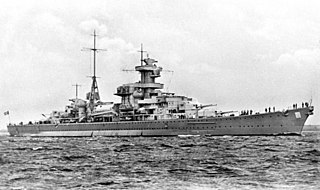 W
WBlücher was the second of five Admiral Hipper-class heavy cruisers of Nazi Germany's Kriegsmarine, built after the rise of the Nazi Party and the repudiation of the Treaty of Versailles. Named for Gebhard Leberecht von Blücher, the Prussian victor of the Battle of Waterloo, the ship was laid down in August 1936 and launched in June 1937. She was completed in September 1939, shortly after the outbreak of World War II. After completing a series of sea trials and training exercises, the ship was pronounced ready for service with the fleet on 5 April 1940. She was armed with a main battery of eight 20.3 cm (8.0 in) guns and, although nominally under the 10,000-long-ton (10,000 t) limit set by the Anglo-German Naval Agreement, actually displaced over 16,000 long tons (16,000 t).
 W
WHMS Broke was a Thornycroft type flotilla leader of the Royal Navy. She was the second of four ships of this class that were ordered from J I Thornycroft in April 1918, and was originally named Rooke after Rear Admiral Sir George Rooke of the Dutch Wars and the Battle of Vigo Bay.
 W
WThe Castillo de Olite was a merchant steamship, which was sunk by the coastal defense batteries of Cartagena in the last days of the Spanish Civil War, while transporting 2,112 Spanish Nationalist troops.
 W
WUSS Corry (DD-463), a Gleaves-class destroyer,, was the second ship of the United States Navy to be named for Lieutenant Commander William M. Corry, Jr., an officer in the Navy during World War I and a recipient of the Medal of Honor.
 W
WUSS Glennon (DD-620) was a Gleaves-class destroyer, the first ship of the United States Navy to be named for Rear Admiral James H. Glennon, who was a recipient of the Navy Cross.
 W
WThe Japanese destroyer Hayate was one of nine Kamikaze-class destroyers built for the Imperial Japanese Navy (IJN). During the Pacific War, she was sunk by American coast-defense guns during the Battle of Wake Island in December 1941, the first Japanese warship to be lost during the war. Only a single man of her crew was rescued.
 W
WUSS Herring (SS-233), a Gato-class submarine, was the only ship of the United States Navy to be named for the herring.
 W
WHMS Irresistible—the fourth British Royal Navy ship of the name—was a Formidable-class pre-dreadnought battleship. The Formidable-class ships were developments of earlier British battleships, featuring the same battery of four 12-inch (305 mm) guns—albeit more powerful 40-calibre versions—and top speed of 19 knots of the preceding Canopus class, while adopting heavier armour protection. The ship was laid down in April 1898, was launched in December that year, and was completed in October 1901. Commissioned in 1902, she initially served with the Mediterranean Fleet until April 1908, when she was transferred to the Channel Fleet. Now outclassed with the emergence of the dreadnought class of ships, she entered service with the Home Fleet in 1911 following a refit. In 1912, she was assigned to the 5th Battle Squadron.
 W
WUSS LCI(L)-93 was an amphibious assault ship, commissioned in 1943 by the United States Coast Guard. It participated in the Operation Husky Landings in Sicily on 10 July 1943, as well as the landings at Salerno, Italy.
 W
WUSS Longshaw (DD-559), a Fletcher-class destroyer, was a ship of the United States Navy named for Dr. William Longshaw, Jr. (1839–1865), who served in the Navy and was killed during the Civil War.
 W
WPallada was the lead ship in the Pallada class of protected cruisers in the Imperial Russian Navy. She was built in the Admiralty Shipyard at Saint Petersburg, Russia. The new class was a major improvement on previous Russian cruisers, although the armor protection was light.
 W
WUSS PC-1261 was a PC-461-class submarine chaser built for the United States Navy during World War II. She was the first ship sunk during the D-Day landings on 6 June 1944, when she was hit by shellfire from German shore batteries.
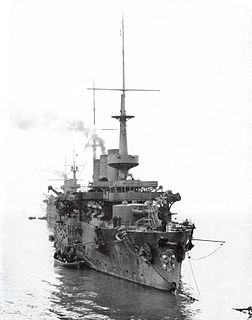 W
WPobeda was the last of the three Peresvet-class pre-dreadnought battleships built for the Imperial Russian Navy at the end of the nineteenth century. The ship was assigned to the Pacific Squadron upon completion and based at Port Arthur from 1903. During the Russo-Japanese War of 1904–1905, she participated in the battles of Port Arthur and the Yellow Sea. Having escaped serious damage in these engagements, Pobeda was sunk by gunfire during the siege of Port Arthur, and then salvaged by the Japanese and placed into service under the name Suwo (周防).
 W
WThe Russian battleship Poltava was one of three Petropavlovsk-class pre-dreadnought battleships built for the Imperial Russian Navy in the 1890s. The ship was transferred to the Pacific Squadron shortly after completion and based at Port Arthur from 1901. During the Russo-Japanese War of 1904–1905, she participated in the Battle of Port Arthur and was heavily damaged during the Battle of the Yellow Sea. She was sunk by Japanese artillery during the subsequent siege of Port Arthur in December 1904, but was raised by the Imperial Japanese Navy (IJN) after the war and renamed Tango (丹後).
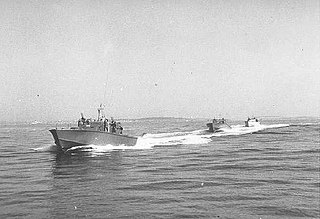 W
WPT-337 was a PT-103-class motor torpedo boat that was sunk in action during the Pacific Theater of World War II in Hansa Bay, New Guinea, on March 7, 1944.
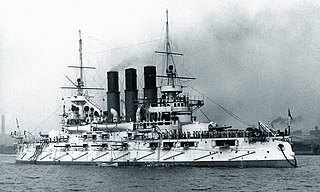 W
WRetvizan was a pre-dreadnought battleship built before the Russo-Japanese War of 1904–1905 for the Imperial Russian Navy. She was built by the American William Cramp & Sons because Russian shipyards were already at full capacity. Named after a Swedish ship of the line that was captured during the battle of Vyborg Bay in 1790, Retvizan was briefly assigned to the Baltic Fleet, but was transferred to the Far East in 1902.
 W
WMS Seattle was a German cargo ship. The cargo on board varied, but she transported mostly timber and lumber. On the last trip she also carried 30,000 boxes of oranges. The last trip of the ship had been dramatic. She was taken under blockade in the Dutch Antilles. The blockade was broken, the ship escaped and the course was set northwards to Iceland. From there she traveled to Tromsø in Northern Norway, from where the ship had received permission from the neutral Norwegian authorities to sail around the Norwegian coast and into the Baltic Sea. Her last stop in Norway was Kristiansand, where she was forced to port by the Norwegian Navy vessel HNoMS Gyller 8 April.
 W
WHMS Sikh was a Tribal-class destroyer of the British Royal Navy. The ship entered service in 1938 and served during the Second World War, participating in the sinking of Bismarck and the Battle of Cape Bon. In 1942, while participating in a commando raid, Sikh was sunk by a combination of shore artillery, antiaircraft guns and aerial bombs.
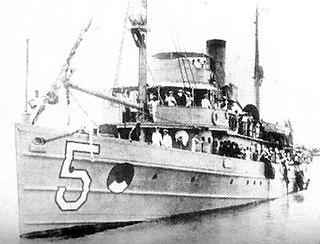 W
WUSS Tanager (AM-5) was an Lapwing-class minesweeper acquired by the U.S. Navy for the dangerous task of removing mines from minefields laid in the water to prevent ships from passing.